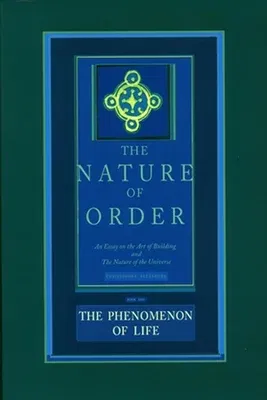Christopher Alexander's series of ground-breaking books including A
Pattern Language and The Timeless Way of Building have pointed to
fundamental truths of the way we build, revealing what gives life and
beauty and true functionality to our buildings and towns. Now, in The
Nature of Order, Alexander explores the properties of life itself,
highlighting a set of well-defined structures present in all order and
in all life from micro-organisms and mountain ranges to good houses and
vibrant communities.
In The Phenomenon of Life, the first volume in this four volume
masterwork, Alexander proposes a scientific view of the world in which
all space-matter has perceptible degrees of life and sets this
understanding of order as an intellectual basis for a new architecture.
With this view as a foundation, we can ask precise questions about what
must be done to create more life in our world whether in a rooma humble
doorknoba neighbourhoodor even in a vast region.
He introduces the concept of living structure, basing it upon his
theories of centres and of wholeness, and defines the fifteen properties
from which, according to his observations, all wholeness is built.
Alexander argues that living structure is at once both personal and
structural.
Taken as a whole, the four books create a sweeping new conception of the
nature of things which is both objective and structural (hence part of
science) and also personal (in that it shows how and why things have the
power to touch the human heart). A step has been taken, through which
these two domains the domain of geometrical structure and the feeling it
creates kept separate during four centuries of scientific though from
1600 to 2000, have finally been united.
The Nature of Order constitutes the backbone of Building Beauty:
Ecologic Design Construction Process, an initiative aimed at radically
reforming architecture education, with the emphasis of making as a way
to access a transformative vision of the world. The 15 fundamental
properties of life guide our work and have given us much more than a set
of solutions. The Nature of Order has given us the framework in which
we can search and build up our own solutions.
In order to be authentically sustainable, buildings and places have to
be cared for and loved over generations. Beautiful buildings and places
are more likely to be loved, and they become more beautiful, and loved,
through the attention given to them over time. Beauty is therefore, not
a luxury, or an option, it includes and transcends technological
innovation, and is a necessary requirement for a truly sustainable
culture.

